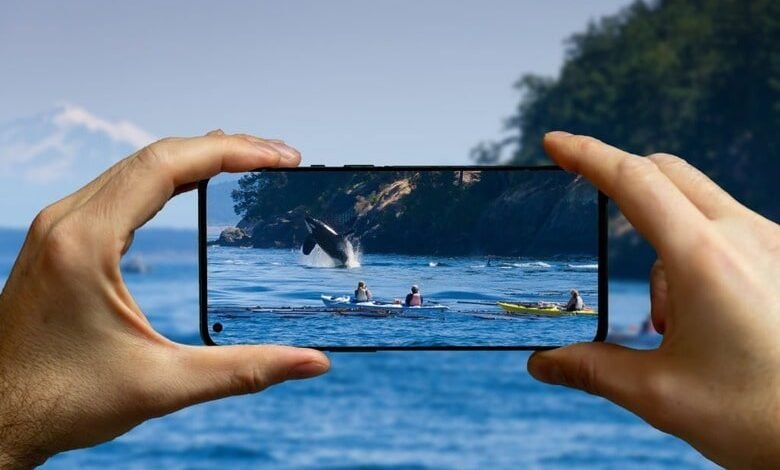Whale Watching Augusta: Tips for a Successful Trip

Going whale watching Augusta and seeing some of the world’s biggest creatures in their natural environment may be an incredible experience for you. This is due to the fact that certain whales may live to be over a century old. Because whales are so massive, they are easily seen from a distance. If you want to enjoy your whale watch, it’s crucial that you come prepared and know what to expect. To be well-prepared for the trip, you need to know what to anticipate. If you want to get the most out of your vacation, you must follow the suggestions below.
Use a Reputable Travel Agency to Plan Your Trip
Going whale watching or hunting for other sorts of marine life at sea may provide you with a thrilling and adventurous experience. It’s possible that the vacation may wind up costing you a lot of time and money if you’re required to bring your kids along. If you want to have a once-in-a-lifetime whale watching Augusta experience, research the many tour companies you are contemplating using thoroughly before booking an appointment.
Pay close attention to the time the service provider has stated for your arrival, and be sure to get there just on time. Get your act together early so you can buy your tickets and board the right kind of transportation with plenty of time to spare. You shouldn’t rush out the door if you want your day of whale watching to be enjoyable and peaceful right from the start. Relax and take your time.
Study the Weather and the Sea Forecast
If you’re in search of adventure, a journey in which you’ll be pummelling by waves while you sail through them may seem like a great time. If you’re seeking a thrilling experience, consider taking a vacation where the waves will buffeting you. Whale watch operators will not go out into the ocean if the waves are too dangerous, despite the fact that the great majority of captains and crew members do not suffer from motion sickness.
You should go whale watching Augusta on a day with the calmest seas possible if you worry about motion sickness or being uncomfortable in stormy waters. If you want to know what the water’s like, you need to check both the regular weather forecast and the marine forecast. Expect rough waves and wind if bad weather is predicted.
Look at the Sightings
Due to the nature of whales being free-living animals, there is no guarantee that you will get to view one during your visit. If customers do not see any whales during their tour, some companies “promise” that they will return to the harbour at no cost.
In order to get an idea of how many and what kinds of whales have recently been observed in the area, it is important to look at the most recent sightings. This data is widely available on the web from a wide range of companies. If you visit the website of a local Australia whale watching research organisation, you may be able to get unbiased data on sightings.
Spend less time attempting to tally whales or analyze their behavior and focus more on having a good time. Observe. While on the excursion, breathe in the fresh ocean air and keep your eyes open for various marine and avian species.
Consider Taking Motion Sickness Medicine
If you’re concerned about becoming seasick but are unsure how your body will respond to the motion of the water, you may want to consider taking motion sickness medication. Even though it’s just for a few hours, a whale watch might seem like an eternity if you’re not feeling well. Nonetheless, there are several chances to see whales, and each of these chances might last for several hours. But there are whale watches that go on for many days straight. Take your anti-nausea medicine 30 to 60 minutes before boarding the boat, and if possible, go for the non-drowsy kind so you can enjoy the trip instead of spending it in a deep slumber.
Bring Your Camera
Bring a camera with you so that you may take pictures of your journey and remember it in the future. You should also bring a large supply of batteries, a memory card that is capable of producing high-quality images, and a large quantity of film in case the things you see are truly remarkable.
Keep in mind that if the organisation is following whale watch criteria that require them to view whales from a distance, a regular point-and-shoot camera could not provide the speed and magnification required to acquire the finest photographs. The enterprise must keep a specified distance from whales in order to comply with the regulations. For this reason, the company must observe whales from a certain distance. When capturing whale watching photos using a 35 mm camera, you can achieve the best combination of zoom and stability by using a lens with a focal length between 200 and 300 millimetres. To preserve the memories of your water adventure, capture moments by taking photographs of yourself and your dear ones relishing the surroundings or interacting with the naturalist or crew aboard the ship.
If You Don’t Succeed at First…
“If at first, you don’t succeed…” is a proverb that has been around for a long time. Remember that the photos you see on websites and brochures most likely represent the best photographs captured over the course of many years of whale watching. This is something that you should keep in mind. Even if it is possible that you may notice objects that are comparable, it is quite improbable that you will encounter them on a regular basis.
When going whale watching, there is one thing that you can always count on being different from one trip to the next. If you don’t see a certain species the first time you go, you should attempt to see it again on a different day or in a different year; this time, you’ll most likely have an entirely new experience!
Summary
The activity of whale watching Augusta is one that involves a significant investment of both time and energy. Engaging in this highly fun pastime can yield a substantial return on investment for the time and money invested into it. However, it is also possible for it to be rather pricey, particularly if you do not have the appropriate preparation.






